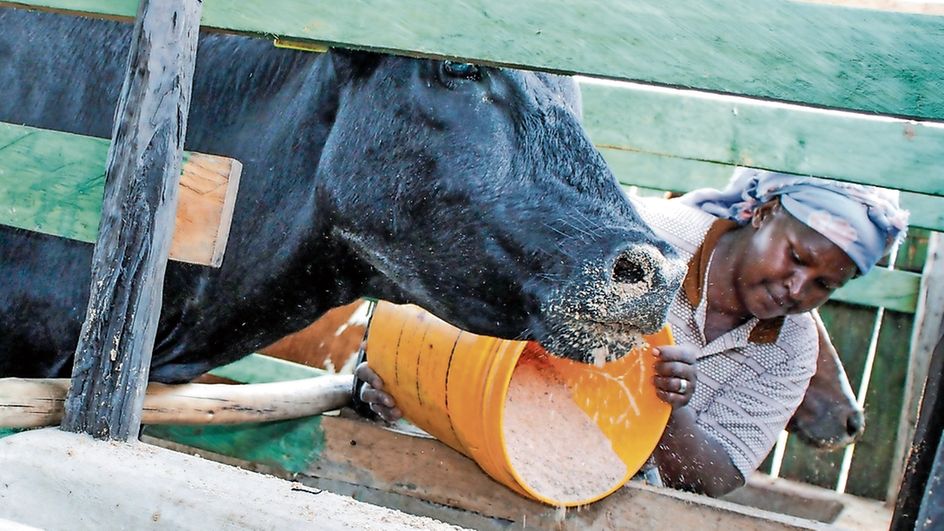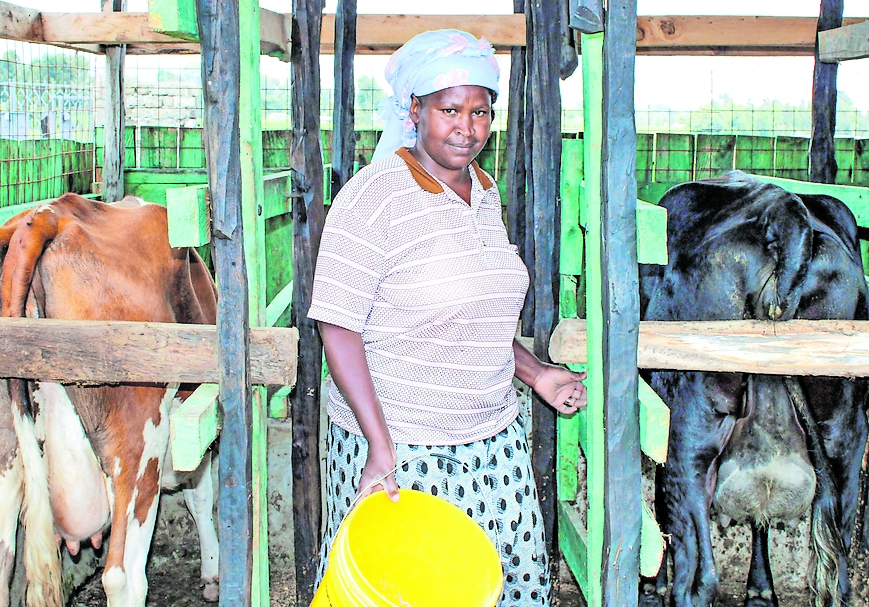I make my own dairy meal for more milk

A 2km, potholed murram road leads one to the home of Kezia Wangechi in Kipipiri constituency, Nyandarua County.
To the casual eye, her 10-by-10ft barn appears small, but this is where Kezia rears 12 dairy cows of Friesian and Ayrshire breeds, eight of them which are currently in-calf.
A Seeds of Gold team visits the farm on a Monday, which Keziah considers a special day because this is when she makes her own dairy meal for the animals, to which she partly attributes the rise in milk production, besides other good management practices.
Kezia belongs to the 30-member Kimago Farmers Help Group, through which she was trained on livestock production and management, lessons that have helped her maximise milk production at a reduced cost.
“I make at least 50kg of the dairy meal at any one time from 9kg of maize flour or maize meal, 10kg of maize germ, 8kg of wheat bran, 3kg of cotton seed cake, 4 kg of premix, 11kg pollard and 5kg of sunflower, all valued at Sh1,840,” says Kezia of the lessons she picked from the training that was offered by the German Agency for International Cooperation (GIZ), in partnership with the county government.
To make the meal, she starts by sourcing ingredients such as maize germ, wheat bran, wheat pollard, cotton seed cake and sunflower from local agrovets. She then grinds and mixes them on a plastic sheet with a spade.
From the 50kg bag, she saves between Sh160 and Sh400, since commercial rations go for between Sh2,000 and Sh2,300 depending on the manufacturer.
CUT PRODUCTION COSTS
“I started making the dairy meal last September, soon after training and my milk production has been rising gradually. When I began, I was feeding one animal that produced eight litres of milk daily and this increased to 16 and the rest have followed suit. I am now collecting over 60 litres a day from about 30 from five animals,” says Keziah, who also feeds the animals oats, Boma rhodes grass and maize fodder.
Kezia, who started dairy farming in 2013, says she offers each of the animal she milks a kilo of dairy meal in the morning and another in the evening during milking time.
“I am happy because I have not only cut production cost but also improved my milk production,” says Kezia, who is one of the tens of farmers in the county now preparing their own dairy meals after the training.

Samuel Kinyua, the Kipipiri sub-county livestock development officer, says the secret to maximising milk production is understanding the food nutritional content of a dairy cow, and what raw materials can be used to make the dairy meal.
“The average cost of producing 1 litre of milk in Nyandarua is Sh25, which means the farmer gets very little if they sell at Sh27,” says Kinyua, adding the sub-county produces about four million litres of milk in a month, but farmers have been complaining of high cost of production.
Some of the things farmers must learn during such training include feeding a cow based on body weight, fodder preservation and the making of silage.
“With the home-made dairy meal, the cost of production per litre of milk is reduced by at least Sh20, but the best level is between Sh10 and Sh12, which is achieved when farmers plant fodder such as Boma Rhodes.








Post a Comment